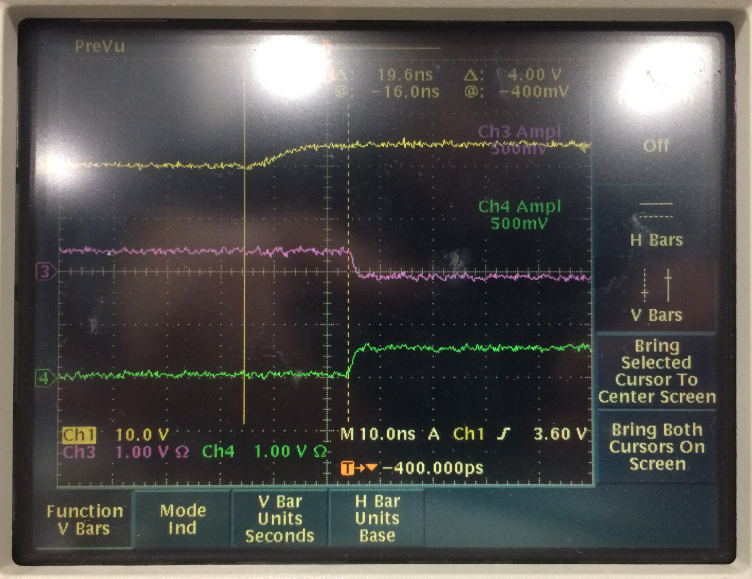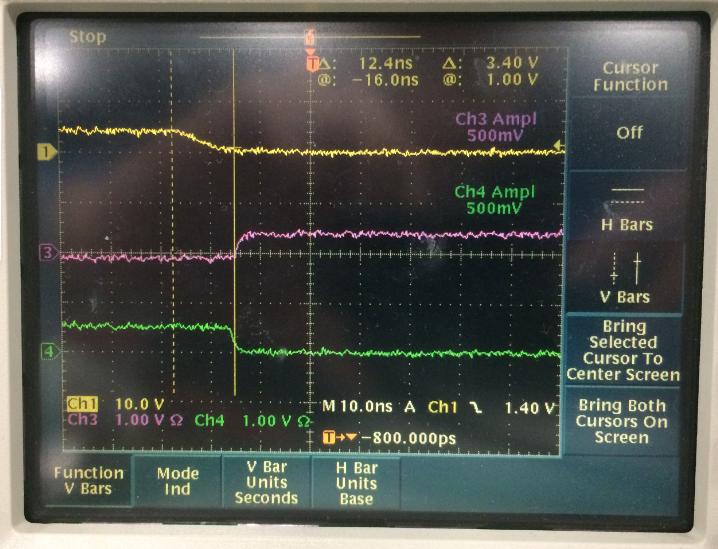Hi,
Please tell me about channel switching delay time of SN74LV4051A.
Can anyone please let me know whether this part SN74LV4051A can support this switching speed
from one channel to next channel without any disturbances in applied voltage at the 8 analog channels.
For example:
I would like to know the delay time of Y2 to Y4 when A, B, and C are controlled with INH=L fixed.
best regards






